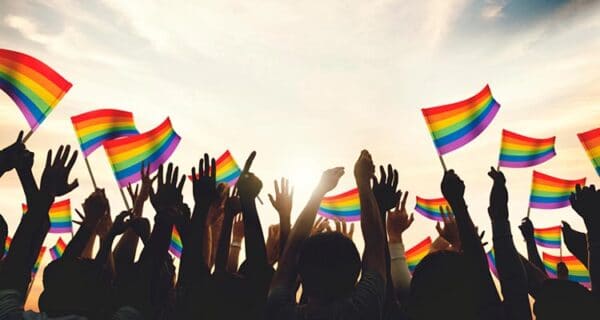Among many memorable things that have happened to me in the past year, December 10th perhaps shines the brightest. I was receiving my first journalism award, instituted by a gay magazine, and it was a great moment of personal glory, but this is not about that. Another monumental thing also happened that evening.
Realizing What Makes A Real Woman
The event was attended by a small community of vibrant individuals of all sexual and gender orientations. As a heterosexual woman (accompanied by her husband, no less!), I was perhaps the minority there. Surrounded by them, my eyes were opened to a lot of realities that I had perhaps chosen not to see thus far. Before that evening, I had seldom paid attention to those rainbow-colored voices who so desperately cry out for recognition and empathy. Their coming out of the closet stories were jarring and beautiful at the same time. But it was something an LGBTQ rights activist in their panel discussion said, which was to me a shock, a revelation and an epiphany. Who is a woman? This seemingly simple question does not have such a simple answer. Dr. Akkai Padmashali, a well-known name in the LGBTQ activism space, has a very inspiring personal journey. She is a trans-woman who has risen from the pits of prostitution to the zenith of earning a PhD and state honors. As I briefly interacted with her, I was equally charmed by her smile and her scholarship. I was suddenly deeply ashamed of my fear of hijras and my prejudices against everything that does not fit the norm, for have I not ignored, shrugged off or sniggered at slightly different, albeit fellow humans before? As she spoke passionately about LGBTQ rights, I was all ears. I had realized how many misconceptions there were about gay people. But there was one thing she said that stood out and has been ringing in my head ever since. She is the reason I have finally now learned what makes a woman and I am grateful for that profound meaning she has taught me. She clearly said, “I am as much a woman without breasts or a vagina or a uterus, and as such, seek the rights of a woman.”
My perspective about what defines a woman changed
It was a personal bolt of lightning to my entire construct of womanhood. “What makes a woman a woman?”, I found myself asking. I put this question to a couple of my girlfriends the next evening too. There were no easy answers. When everything is ‘normal’, rarely are any questions asked about gender and sex. From the moment a girl child is born, her vagina becomes the yardstick to conveniently bracket her into the largely accepted notion of femininity. As she steps into adolescence, her breasts become the subject of much-unwarranted attention. The functions of menstruation and eventually, procreation, finally accord to her the status of a ‘woman’. But mind you, this society tolerates no imperfections. We know how cruel people can be to women who fall short on even half a parameter and how myths about women can completely crush their persona and aspirations. Don’t we know the names that are given to women who do not menstruate or cannot have children? If we are flat-chested, there is a problem. If we cannot lactate, there is a problem. Even with nine out of ten things in place, life is goddamned hard for a woman. But as someone who has managed to check all these boxes, and consequently earned her so-called feminine stripes, Dr. Padmashali’s statement jolted me out of my skin. I realized just how visceral my identity as a woman was. What makes a real woman is far more than just breasts on her chest. What if I woke up tomorrow without breasts or a vagina? What if I stopped menstruating right away? What if fate forced a double mastectomy, a hysterectomy, and female genital mutilation upon me all at once? Let’s make another deduction here. What if I didn’t even have any Estrogen or Progesterone to fall back on? Without these – what we think of as essential appendages – how much of a woman would I be? Would I be a woman at all?
What Makes You A Woman?
The answer to what makes a woman is often answered by describing a basic outline of feminine nature that is often imposed upon women. It is hard to imagine oneself as a woman, left just with an abstraction called ‘feminine nature’. What is feminine nature anyway? I reckoned I would still depend on my memories of these ‘essential’ experiences to draw upon my identity and understanding what defines a woman. I would have to lean on my having known what a period is like, what the pleasures of vaginal sex are or what the pain of childbirth is. And yet, here was this individual, who identified as a woman without ever knowing or hoping to know any of these biological measures. Would it be enough for me, like Dr. Padmashali, to just dress like a woman and desire a man to feel like a woman? Some day, I shall sit her down and ask her, “What makes you a woman?” Till then, I shall wrestle with my identity and try to find some answers.


